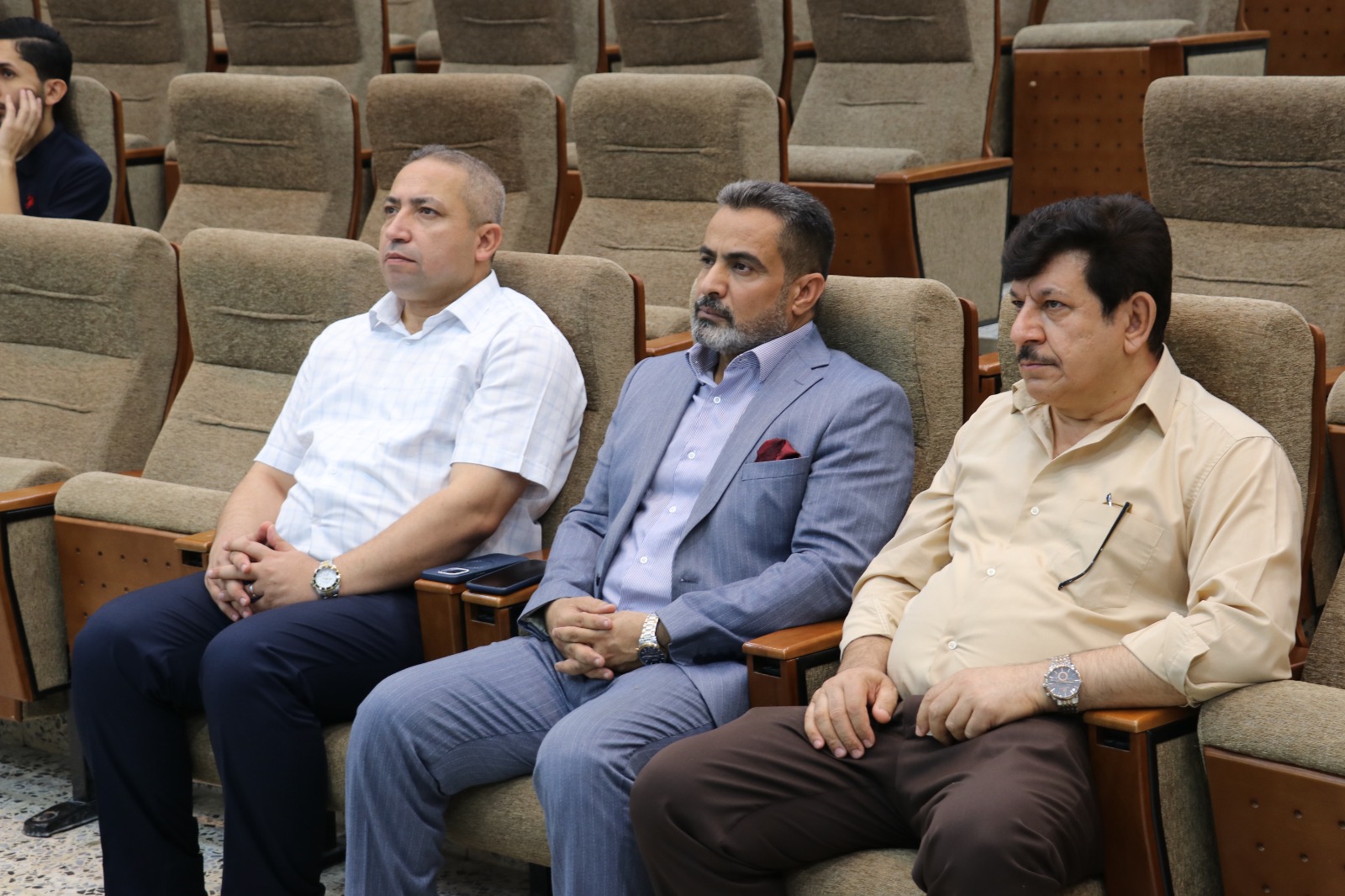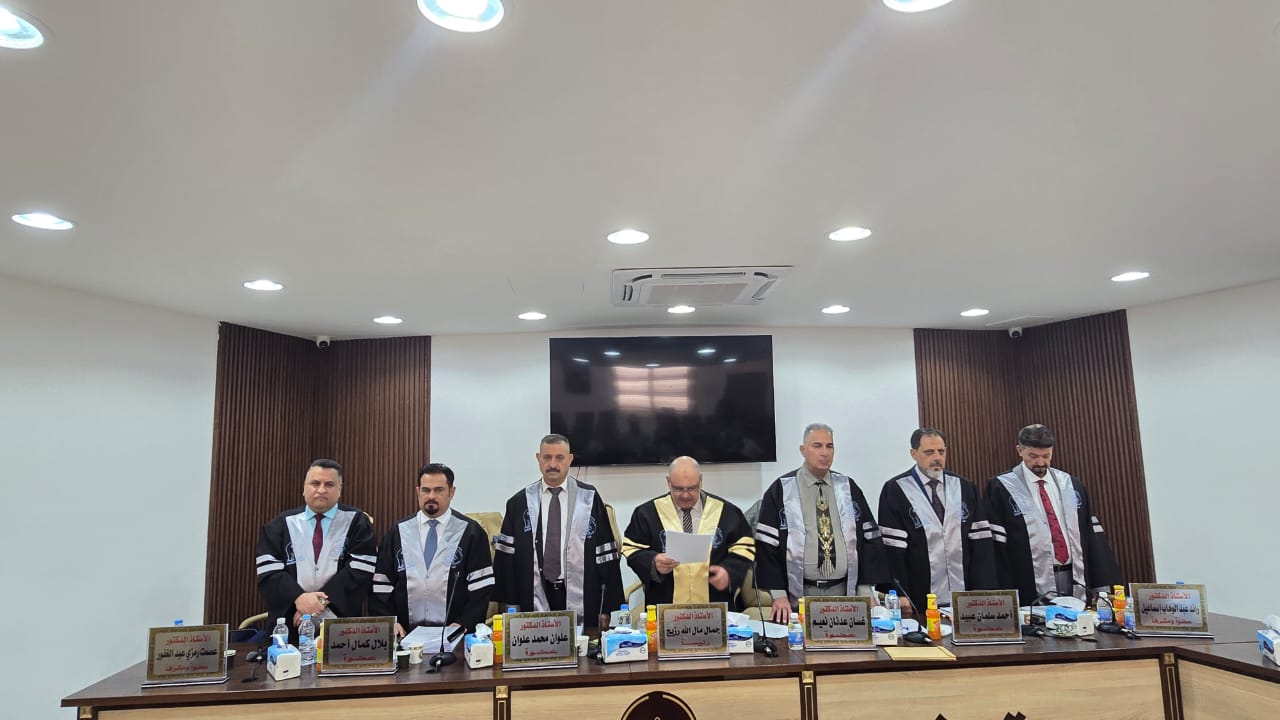Discussion of the dissertation of doctoral student " Ahmed Mudhafar Ahmed Marouf"
The public discussion took place for the Doctoral student (Ahmed Mudhafar Ahmed Marouf) at Anbar University, College of Science, Department of Physics, on Saturday, September 6, 2025, in Ibn Sina Hall, for his tagged thesis
" Novel synthesis pathway of bismuth sulfide nanostructure by pulsed laser ablation in liquid for photovoltaic detectors"
The discussion committee consisted of:
|
University of Anbar - College of Sciences - President |
Prof. Dr. Jamal Malallah Razij |
|
University of Technology - College of Applied Sciences - Member |
Prof. Dr. Alwan Mohammed Alwan |
|
University of Anbar - College of Sciences - Member |
Prof. Dr. Ahmed Salman Obaid |
|
University of Anbar - College of Applied Sciences, Hit - Member |
Prof. Dr. Ghassan Adnan Naim |
|
University of Anbar - College of Education for Pure Sciences - member |
Prof. Dr. Bilal Kamal Ahmed |
|
University of Anbar - College of Sciences - Member and Supervisor |
Prof. Dr. Ismat Ramzi Abdul Ghafour |
|
University of Technology - College of Applied Sciences - Member and Supervisor |
Prof. Dr. Raed Abdul Wahab Ismail |
The study aims a novel pathway to preparation of bismuth sulfide nanoparticles via laser ablation of bismuth in various solutions and to study the effect of laser parameters on the characteristics of Bi2S3/Si photodetector device.
The influence of various laser parameters was extensively studied through structural, morphological, chemical, optical and electrical characteristics. The current-voltage properties of the heterojunctions under both dark and light conditions have been studied. The prepared samples were used to prepare and characterize the Bi2S3/p-Si HJs as a function of various laser fluence.
?..jpeg)

.jpeg)
.jpeg)

